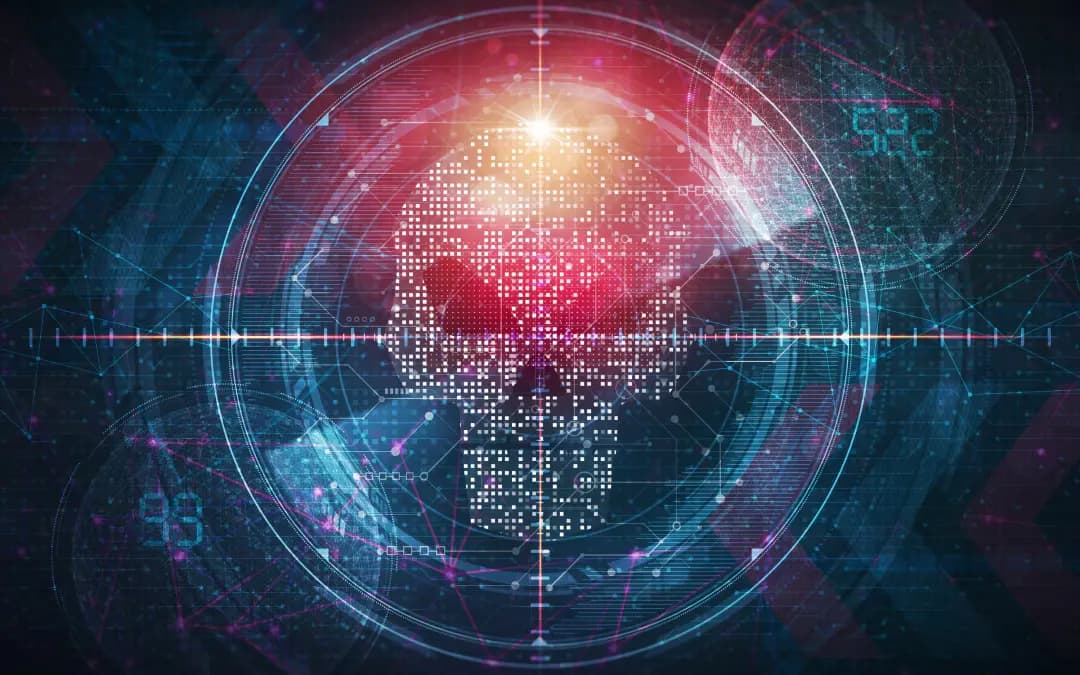What Is threat hunting?
This cybersecurity practice focuses on actively seeking out and neutralizing threats that are already within an organization’s IT environment.
Tyler Moffitt
July 22, 2025

Cyber threats have grown more sophisticated, stealthy, and persistent in recent years. While traditional security tools like firewalls and antivirus programs are effective at catching known threats, they cannot detect every attack. Many advanced adversaries bypass automated defenses, lurking undetected within networks for weeks or even months.
This is where threat hunting comes into play. Threat hunting is the proactive process of searching for hidden cyber threats that have slipped past traditional defenses. It combines human intuition, security expertise, and advanced analytics to uncover malicious activity before it can escalate into a full-scale breach.
The stakes are high. Studies have shown that attackers can remain undetected for an average of 200 days in a compromised network. During this dwell time, they can steal data, establish persistence, and prepare devastating attacks such as ransomware deployments or supply chain compromises.
As organizations increasingly adopt cloud services and remote work, their attack surfaces expand. Proactive threat hunting has become an essential strategy for detecting and containing threats that would otherwise go unnoticed.
This article explores what threat hunting is, why it matters, how it works, and the various forms it takes.
Threat hunting explained
Threat hunting is a cybersecurity practice focused on actively seeking out and neutralizing threats within an organization’s IT environment. Unlike reactive approaches that rely on alerts from security tools, threat hunting assumes that adversaries may already be inside and aims to find them before they cause harm.
It is a hypothesis-driven process where analysts investigate potential indicators of compromise (IOCs) or indicators of attack (IOAs). Hunters look for patterns and behaviors that automated systems might miss, especially in complex environments with high volumes of data.
Traditional security tools are essential but imperfect. They are designed to detect known threats based on signatures or predefined rules. However, sophisticated attackers often use tactics that blend in with normal network traffic, such as living-off-the-land techniques where legitimate administrative tools are abused for malicious purposes. Threat hunting bridges this gap by using human insight and advanced analytics to surface anomalies.
This proactive approach is especially valuable in detecting fileless malware, zero-day exploits, and advanced persistent threats (APTs) that evade conventional defenses.
Why Is threat hunting important?
The importance of threat hunting lies in its ability to reduce the dwell time of attackers and limit the damage they can inflict.
Attackers are becoming stealthier
Modern adversaries use increasingly sophisticated techniques to avoid detection. Fileless malware operates entirely in memory, making it invisible to traditional antivirus software. Supply chain attacks embed malicious code in trusted software updates. In these scenarios, standard detection tools often fail to raise an alarm.
Reactive defenses are not enough
Relying solely on reactive security means waiting for alerts. But what if no alerts are triggered? Threat hunting addresses this by actively searching for signs of compromise, even when no obvious indicators are present.
Early detection reduces impact
Identifying threats early can prevent data breaches, ransomware deployments, and regulatory violations. Organizations that incorporate threat hunting into their security strategy are better positioned to respond quickly and minimize the scope of an attack.
How threat hunting works
Threat hunting follows a structured process that blends human expertise with technological support.
Hypothesis creation
The process often begins with a hypothesis. Analysts develop theories about potential threats based on threat intelligence, observed anomalies, or knowledge of attacker tactics, techniques, and procedures (TTPs). For example, a hunter might hypothesize that attackers have gained initial access through phishing and are using PowerShell to move laterally.
Investigation and data analysis
Hunters then analyze telemetry from endpoints, network traffic, and log data. They may use security information and event management (SIEM) systems, endpoint detection and response (EDR) tools, and threat intelligence platforms to sift through vast datasets. Behavioral analysis helps identify deviations from normal patterns.
Detection of indicators
During the investigation, analysts search for IOCs and IOAs. These can include unusual login times, abnormal data transfers, or connections to known malicious domains. Findings are correlated with threat intelligence to confirm their significance.
Response and remediation
Once a threat is confirmed, hunters work with incident response teams to isolate affected systems, remove persistence mechanisms, and remediate vulnerabilities. Insights from the hunt are fed back into security controls to improve automated detection in the future.
Types of threat hunting
There are several approaches to threat hunting, each suited to different organizational needs.
Structured hunting
This approach relies on known attack patterns and frameworks such as the MITRE ATT&CK framework. Analysts use predefined queries and playbooks to search for specific TTPs.
Unstructured hunting
Unstructured hunting is driven by analyst intuition and deep knowledge of the environment. It involves exploring data for anomalies without a predefined hypothesis.
Hybrid hunting
Many organizations adopt a hybrid model that combines structured frameworks with the flexibility of unstructured exploration. This allows them to balance efficiency with creativity in uncovering hidden threats.
Detection and prevention synergy
Threat hunting does not replace automated security tools. Instead, it works alongside them to create a layered defense that is far more resilient.
Advanced Endpoint Protection
Modern endpoint protection systems are essential for detecting malware, suspicious processes, and unauthorized changes. They provide the telemetry hunters rely on to investigate anomalies. Behavioral analytics can surface subtle indicators of compromise that signature-based tools may overlook.
Real-time threat intelligence
Threat intelligence platforms provide context on emerging threats, enabling hunters to align their hypotheses with the latest adversary tactics. Integrating threat intelligence feeds into SIEM and EDR tools allows organizations to block known malicious domains and IP addresses proactively.
SOC automation and orchestration
Security operations centers that use automation can dramatically improve the efficiency of threat hunting. Automated workflows help isolate suspicious systems, block attacker communication channels, and gather evidence for analysis without delay.
Managed Detection and Response (MDR)
For many small and medium-sized businesses, building an in-house threat hunting team is not practical. MDR services provide access to expert hunters and advanced tools, allowing organizations to benefit from proactive defense without the overhead of hiring and maintaining specialized staff.
AI’s role in threat hunting
Artificial intelligence is transforming threat hunting by enhancing both defensive and offensive capabilities.
Offensive applications
Adversaries are beginning to use AI to automate reconnaissance, identify vulnerabilities faster, and create phishing lures that are nearly indistinguishable from legitimate communications. AI can even help attackers dynamically adjust their tactics to avoid detection during hunts.
Defensive applications
On the defensive side, AI-enabled analytics allow hunters to process enormous volumes of data and spot patterns that humans might miss. Machine learning models can identify unusual network traffic, lateral movement, or deviations from normal user behavior.
Natural language processing tools are now used to analyze log data for context, reducing the time it takes to pivot between hypotheses and findings. AI also powers automated response systems, enabling immediate containment of identified threats.
Responding to threat-hunting discoveries
When threat hunting uncovers malicious activity, organizations must act quickly to contain and eradicate it.
Containment
Affected systems should be isolated from the network immediately. This step prevents attackers from moving laterally or exfiltrating additional data.
Eradication
Security teams must remove all traces of the malware and attacker persistence mechanisms. This often involves cleaning registry entries, removing scheduled tasks, and applying software patches.
Recovery
Systems are restored from clean, tested backups. Credentials for compromised accounts should be reset, and multi-factor authentication enforced wherever possible.
Post-hunt reporting
A detailed post-hunt report should document findings, response actions, and recommendations for improving security posture. This information helps leadership understand the value of threat hunting and informs future strategy.
Notable case studies
SolarWinds supply chain attack (2020)
Threat hunting played a key role in uncovering the SolarWinds compromise. Analysts noticed unusual network traffic and unauthorized API calls, which led to the discovery of malware hidden in software updates. This breach affected thousands of organizations, including US government agencies.
Colonial Pipeline precursor activity (2021)
Before ransomware disrupted fuel supplies, attackers gained initial access using stolen VPN credentials. Proactive hunting for anomalous login activity could have revealed the intrusion earlier.
SMB example: Phishing-eerived compromise
An SMB discovered via an MDR service that an employee account had been compromised through a phishing email. Threat hunters identified lateral movement attempts and isolated affected systems before any data exfiltration occurred.
Conclusion
Threat hunting is no longer an optional activity for organizations that want to stay ahead of cyber threats. It is a proactive practice that allows security teams to detect hidden attackers, reduce dwell time, and strengthen overall resilience.
This approach does not replace traditional defenses but enhances them by addressing blind spots in automated tools. Organizations that combine threat hunting with advanced endpoint protection, real-time threat intelligence, and robust response workflows are far better prepared to contain incidents before they escalate.
For small and medium-sized businesses, managed detection and response services offer an accessible way to gain the benefits of proactive hunting without building an in-house team.
In a world where adversaries constantly refine their tactics, the ability to hunt for threats can make the difference between a minor incident and a major breach. Organizations that prioritize this capability will be better positioned to protect their systems, data, and reputation in the face of evolving cyber risks.
Discover how MDR services can tackle your security needs
Cost-effective, co-managed Managed Detection and Response provides 24/7/365 threat monitoring, expert-led threat hunting, and rapid remediation support for malware, phishing, and other advanced attacks.

Tyler Moffitt
Tyler Moffitt is a senior threat research analyst who stays deeply immersed within the world of malware and antimalware. He is focused on improving the customer experience through his work directly with malware samples, creating antimalware intelligence, writing blogs, and testing in-house tools.